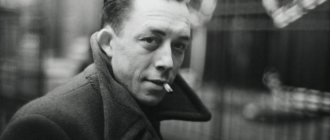It has long been known that a person is happy when he does what he loves and enjoys it. But for some reason today many people feel uncomfortable in their workplace. Is it because they chose the wrong direction of activity? Even in the last century, a great artist correctly noted: “The crow should not be like a cow, and the little frogs should not fly under a cloud!” But how to determine your purpose? Doctor of Pedagogical Sciences, Professor of the Department of Teacher-Researcher at TSPU Irina Yuryevna Sokolova talks about this.
It all starts at birth
“At one time, while working at a technical college, I helped many students decide on a professional path,” says Irina Yuryevna. - It seems like, you look, a person has a mathematical mind, and the intellect of a diplomat, so maybe he doesn’t need to become a machine operator, but manage people. Every person has potential, it is important to discover and develop it in time. Each of us comes to earth already with inclinations, that is, with physiological characteristics and the type of nervous system. Intelligence is formed in the process of education, training, as a response to the mind to overcome certain difficulties. By socializing, the child will either develop his natural talents or drive them into a corner. The parents’ task at this stage is to observe what the child likes best: drawing, dancing, writing stories, singing, building multi-story buildings or collecting a herbarium.
The definition of left-handedness - right-handedness is of great importance. Since it is known that the left hemisphere, which is considered dominant in right-handed people, is responsible for logic, analysis, speech and mental activity, for storing and processing factual information, and mathematical abilities. The right hemisphere is responsible for intuition, imaginative thinking, imagination, processing of non-verbal information, musicality, spatial orientation and emotions. In children under 7 years of age, the cerebral hemispheres are in the formative stage, interhemispheric connections are actively developing, so left-handedness can be hidden. To recognize which hand is dominant, you need to go through the following tests.
Tests to determine left-handedness-right-handedness
- Determine the dominant eye. The child is invited to look through a kaleidoscope or telescope (to which eye he brings it first (L, R).
- Interlocking fingers: upper position of the thumb (L, R).
- Cross your arms over your chest: “Napoleon pose”, which hand is on top – L, P.
- Determination of the size of the thumb nail.
- On which arm (L, R) is the venous system more developed?
- Determine which hand is 1-2 mm longer.
- Observe which leg starts the movement.
- Which hand holds a pen, fork, spoon, brushes teeth, shoes.
- Which hand combs your hair?
10. Which hand cuts the paper, unlocks the door.
More than half of the answers are P - right-handed, L - left-handed, if three or four questions revealed a left-handed reaction - hidden left-handedness. It is necessary to develop the child’s abilities based on the functions of the dominant hemisphere.
Personality types
I.P. Pavlov proposed a classification of personality types based on the characteristics of the nervous system. The scientist divided all people into three types, depending on the mechanism of work and interaction of the right or left hemisphere.
Artistic type
personality (functions of the right hemisphere are active) - a person perceives the world through images, does not analyze or attach importance to details.
Thinking type
(functions of the left hemisphere are active) – a person is prone to logical thinking, resorts to analysis, calculates the situation.
Medium type
– the most common, corresponds to balance between the left and right hemispheres, between logical thinking and artistic perception.
Research by psychophysiologists indicates that nature inherent in every person the potential of a “thinker” and “artist” - a creative personality, which is associated with the intravital properties of the nervous system, the functions of the cerebral hemispheres, on the basis of which various human abilities and types of talent develop. But, unfortunately, in modern schools, children develop more of the “thinker” type, leaving little attention to the artistic type. In this case, a very important potential of the individual remains unused, which is why the choice of a professional path suffers.
M.S. Kagan identified five potentials in the structure of each personality:
1) Epistemological.
It is determined by the amount and content of information that a person has, based on knowledge about the natural and social world, and the ability to cognize it. The set of information depends on the natural mindset, education and practical experience of the individual.
2) Axiological potential of personality.
This is the system of values (ideals, aspirations, goals, beliefs) that is acquired by a person in the process of socialization.
3) Creative.
Abilities obtained from nature and independently used for certain actions, for creative or destructive, productive and reproductive work, as well as the degree of their implementation in a particular area.
4) Communication potential.
It is characterized by the degree and form of its communication, the nature and strength of establishing contacts with other people. The essence of interpersonal communication is expressed in the paradigm of social roles.
5) Artistic potential of the individual.
The level of artistic needs, the intensity of their use, the method of satisfaction.
In each person the three “I”s are combined in varying proportions. An individual is a person as a biological being, living according to the program of nature, his tasks are: to protect himself, to survive. Personality is a person as a being living in a certain society and pursuing goals set by society. Individuality is a person who can live according to his own program, set his own goals, create, create. A personality is determined not only by its character and temperament, but by the volume and quality of knowledge, a value system and the ability to communicate with the outside world. The highest task of any person is to develop individuality, based on the potential of the individual.
How to determine your personality type from an astrological point of view
Let us present one of the ways to determine a person’s character type based on the signs and determinants of the horoscope, recommended for practice by astrologer V.A. Eliseev (1991).
Determinants are psychological characteristics of the individual. Each of the people of one or another zodiac sign has one of the main determinants and the main trait of the type. Peculiarities of human behavior V.A. Eliseev determines only by date of birth, zodiac affiliation and believes that the determinants underlie human behavior and explain its causes.
In the proposed version of determining the basic characteristics of a person, astrological time is counted according to the solar calendar. The time of the first determinant lasts from the beginning of the entry of the Sun into the Zodiac sign under which a person was born until the end of the dominance of this sign (for example, for Aries this time is from March 21 to April 20).
The second determinant occurs from the time of the next Zodiac sign until its end (from April 21 to May 21 - This is the month of Taurus), etc., based on the movement of the Sun through the signs of the Quadrature.
Determination of the personality of men and women according to astrological indicators
A woman’s behavior will differ from a man’s behavior in all signs of the Quadrature, since a woman is more emotional and sensitive. The role of a woman in preserving the family, her natural maternal nature determines her conservatism and the realization of her main social purpose through raising children and creating a home.
A man plays the role of a destroyer of the existing structure and, updating it, realizes his social purpose through participation in group and social communication. To do this, he requires courage, honesty, masculinity, will, and stubbornness.
Determining a person's personality using astrological indicators. The predominance of male or female character traits in a particular type of person allows astrologers to conditionally divide people according to their character into six male and six female. Male types include people born under the signs of the Zodiac: Aries, Scorpio, Sagittarius, Capricorn, Aquarius, Pisces. People who often exhibit feminine character traits include those born under the signs: Taurus, Gemini, Cancer, Leo, Virgo, Libra. Each of them has its own main dominant and basic behavioral traits
The duration of each Zodiac sign (its astrofield) is 30 days, or three decades (10 days each).
- The second decade reflects the purest type of person inherent in this sign.
- Those born in the first decade carry certain characteristics of the previous type of sign.
- Those born in the third decade have separate features, in addition to their own sign, also the sign of the subsequent one.
Astrologers paid attention to an interesting detail: on October 21, July 15 and some other dates (usually once during the action of a sign, and not each of the circle of the Zodiac) special, unique types of people are often born.
Temperament type
Also, already in elementary school, it is possible and necessary to identify the type of temperament of a child, comments the educational psychologist, which depends on the physiological processes of the brain and their relationship: excitation, inhibition. Extroverts (choleric, sanguine) are impulsive individuals who tend to splash out their feelings, introverts (phlegmatic, melancholic) are reflective types, prone to internal experiences and withdrawn behavior.
Impulsivity-reflectivity are two sides of one of the methods of cognitive activity, knowledge of the characteristics of which is important for the teacher to take into account in the process of educational activities in relation to each student. Thus, it was found that, according to their individual characteristics, reflective students (“later maturing”) most often have an inert nervous system and perceive information visually well. Impulsive schoolchildren, as a rule, have a mobile nervous system, they perceive information better by ear; according to psychophysiologists, they are considered “early maturing.” When constructing educational and cognitive activities, it is very important to take into account the relationship between impulsiveness and reflectivity for the effective formation of intelligence and unlocking the child’s potential.
To determine impulsivity-reflectivity, you can take the following test.
Never confuse movement with action
Businessmen are the most prone to risky lifestyles of all personality types. They live in the moment and rush straight into action; they are the center of the cyclone. People with the Entrepreneur personality type enjoy drama, passion, and pleasure not for the sake of emotional excitement, but because it stimulates their logical mind. They are forced to make important decisions based on what is happening, quickly reacting to a changing environment.
Therefore, school and other social institutions with strict regulations become a difficult environment for Businessmen. Of course, this is not because they are not smart enough - no, they are capable of great success, but the regimented lecture approach used in formal education is too far from the method of practical knowledge that Businessmen like. It takes enough mental maturity to begin to see this method as a natural means to an end, something that offers interesting possibilities.
The difficult point is that it is more natural for Businessmen to follow their own moral principles, rather than someone else’s. Rules are made to be broken. This adage is unlikely to appeal to most school teachers or business executives, and this approach can lead to the development of a peculiar reputation among Businessmen. But if they keep their hassles to a minimum, curb their energy, and manage to stay focused during boring activities, then the Hustler will become a serious force to be reckoned with.
Impulsiveness-Reflectivity Test
Methodology “Comparison of similar drawings”
The technique is used to diagnose the cognitive style of impulsiveness-reflectivity. This cognitive style, in accordance with the original assumption of J. Kagan, characterizes individual differences in the tendency to make decisions quickly or slowly. This stylistic property manifests itself most clearly in conditions of uncertainty, when it is necessary to make the right choice from a number of alternatives. Impulsive subjects tend to react quickly in a multiple choice situation, and hypotheses are put forward without analyzing all possible alternatives. Reflective subjects are characterized by a slow pace of reaction in such a situation, hypotheses are tested and refined many times, the decision is made on the basis of a thorough preliminary analysis of the signs of alternative objects.
Procedure
The subject is presented with 2 training sheets, then 12 main sheets, on each of which there is an image of a familiar object (standard figure) on top, and at the bottom there are 8 almost identical images of the same object in two rows, among which only one is completely identical to the standard figure. The subject must find and indicate an image that is completely identical to the standard figure.
See sheets of drawings below.
Instructions
“Now you will see one picture and several similar ones. You need to find in this picture exactly the same picture as the one above and show it. For initial training, you will be shown two demo cards. Further tasks will not be so simple. Find as quickly as possible a picture that is as similar as possible to this one above, and show it right away.”
Processing and interpretation
Key
Picture numbers are counted from left to right, top to bottom.
demo-1 – 1; demo-2 – 5;
leaf – 4; steamboat – 7; flower – 1; lamp – 8; teddy bear – 4; cat – 1; cowboy – 8; glasses – 4; chicken – 5; airplane – 1; scissors – 5; dress – 5.
Indicators of impulsivity/reflectivity:
- latent time of the first response (sum);
- total number of errors.
Reflective individuals are above the median response time and below the median number of errors, while impulsive individuals are below the median response time and above the median number of errors.
On average, approximately 2/3 of the sample falls on reflective and impulsive subjects, 1/3 – on two special categories of subjects, called “fast/accurate” and “slow/inaccurate”.
People with an impulsive style quickly make hypotheses in a situation of alternative choice, but they make many wrong decisions. People with a reflective style, on the contrary, are characterized by a slower pace of decision-making; accordingly, they make few mistakes due to a thorough preliminary analysis of hypotheses.
Eight Types of Intelligence
As the child grows up, his intellect develops, continues Irina Yuryevna, and by the age of 10, the type of intelligence can be determined. H. Gardner identified eight types of intelligence; having learned which of them predominates in your child, you can gradually direct him to one or another professional area.
- Linguistic intelligence
– a person uses different language styles to convey information (poet, writer, editor, journalist).
- Musical intelligence
– a person enjoys composing, listening and performing music (musical performer, composer).
- Logical-mathematical intelligence
– a person knows how to explore, thinks in categories, finds relationships between structures through the manipulation of symbols, signs, and is inclined to organize actions (mathematician, scientist).
- Spatial intelligence
– a person knows how to perceive objects through images, unfold a picture in the mind, create spatial compositions (architect, engineer, surgeon).
- Bodily-kinesthetic intelligence
– a person feels the need and is endowed with the ability to move, implements these skills in sports, performing arts, and manual labor (dancer, athlete, mechanic).
- Interpersonal intelligence
– a person is able to notice and understand the needs and desires of other people, capture people’s moods, and anticipate their behavior (political leader, teacher, psychotherapist, diplomat).
- Intrapersonal intelligence
– a person knows how to manage his feelings, control them, skillfully using them in transmitting and processing information (for example, a religious leader, philosopher, writer).
- Naturalist Intelligence
– the ability to explore living nature and the connections between its components (biologist, botanist, farmer, livestock breeder, veterinarian).
Choosing a path
Taking into account the opinion of I.P. Pavlov that a person is “a system that develops and self-develops, supports itself and even improves itself,” we can conclude that a person has the potential for self-regulation, self-development, self-education and self-actualization. Taking into account temperament, personality type and type of intelligence, one should not forget about the important principle of harmony of bodily, mental and spiritual nature, the psychologist summarizes. Unrealized abilities during life can lead a person to illness. It is also important to use the principle of search activity; if, when choosing a profession or favorite activity, something no longer satisfies you, we are looking for something new. This is where the principles of self-actualization come into force - what you need and is important at the moment - and self-realization - the ability to put your plans into practice.
For professional self-determination, a psychologist must work with the child even at school age, but parents can notice many points and guide him in the right direction. The age of professional self-determination is 17-20 years old, but even earlier you can not only understand, but feel what you want to do in life. For an adult, the scheme for choosing a profession is the same; it is enough to remember what you liked to do as a child, what brought you pleasure and, based on your interests, choose a new or change an old profession.
Yulia Savelyeva
Classification of personality psychotypes depending on character
People differ not only in their character traits, but also in their attitude to life, society and moral values. Although there is a concept of proper behavior, people behave differently.
The German psychoanalyst and sociologist E. Fromm introduced the concept of “social character” and defined it as a certain identical set of character traits in the personality structure of the majority of members of a particular community. Any community, class or group of people has a certain social character.
Social character was taken as the basis for the classification of psychological personality types.
Psychological personality types according to E. Fromm:
- "Masochist-sadist"
A person who is inclined to direct aggression towards himself or other people if he considers them to be guilty of ongoing personal failures or problems of the whole society. Such people strive for self-improvement, are insecure, punctual, responsible, demanding, domineering, and love to terrorize others, justifying their actions with good intentions.
Psychological masochism is almost always combined with sadism. However, there are people who are more inclined to one of the types.
Individual typological features of a “masochist”: self-deprecation, self-criticism, tendency to always blame oneself for everything. Fromm defined a “sadist” as an authoritarian personality. This is an exploitative man, domineering and cruel.
- "Destroyer"
He does not cause suffering to himself or others, but aggressively eliminates the cause of his troubles. In order not to feel powerless and frustrated, a person ends the relationship or interrupts the business he has started, that is, he uses destructiveness as a means of resolving any trouble. “Destroyers” are usually anxious, desperate, cowardly people, limited in the realization of their capabilities and abilities.
- "Conformist Automaton"
Unlike the two previous psychological types, the “conformist” is passive. He does not fight, but resigns himself to difficult life circumstances. This is a too labile person who has practically lost his
- "I"
He is an adaptable person who will change his point of view, behavior, principles and even type of thinking if the situation demands it. Such people are immoral, and therefore do not see anything shameful in changing points of view and life values.
This social typology does not characterize people from the best side, but it reveals the problems of society and remains extremely relevant in our time.
It is impossible to say which typology is better; they complement each other. Any personality typology allows an individual to know himself and at the same time realize his uniqueness.











